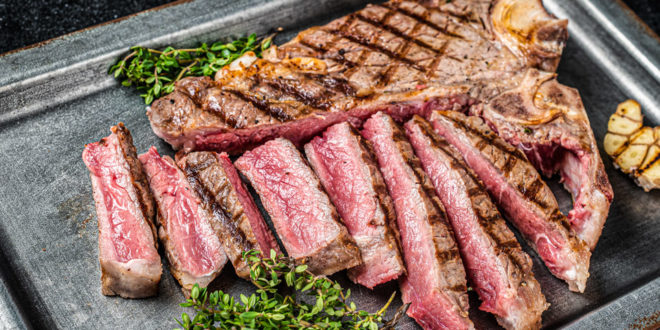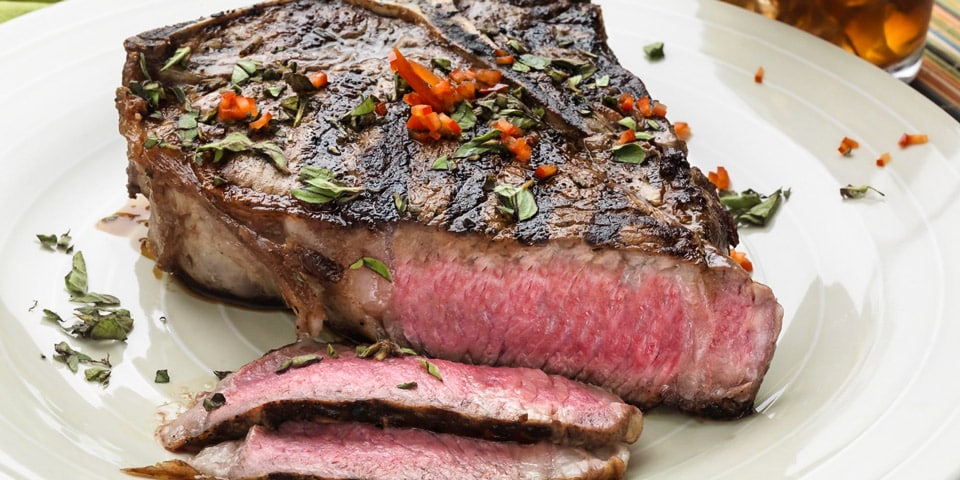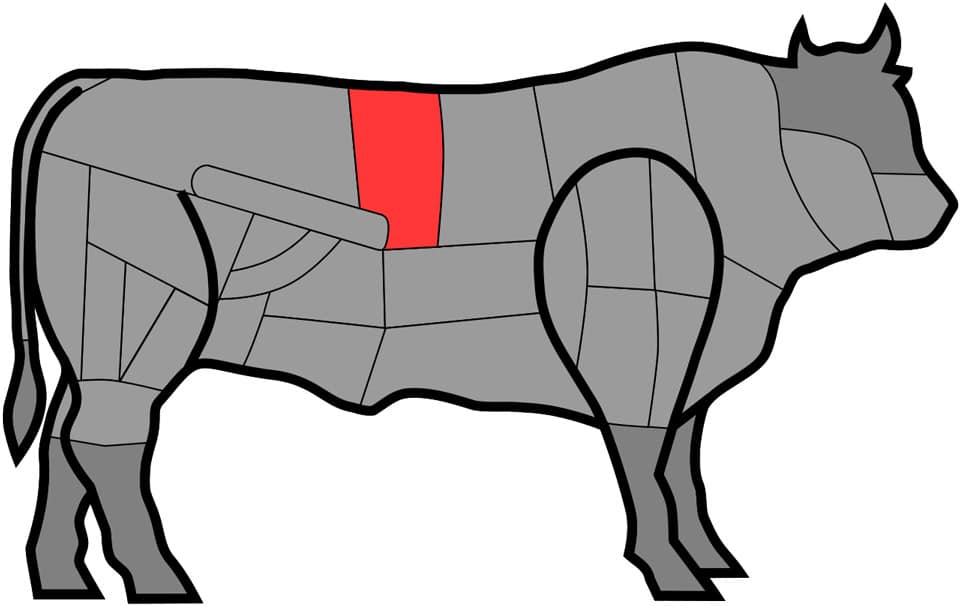When you think of steak, what comes to your mind? It’s unlikely that Italy is one of the first things you consider. Although we don’t always associate this food with Italian cuisine, it’s undeniable that the Florentine Steak (Bistecca Fiorentina) has become one of the most beloved meat dishes both in Tuscany and worldwide. It is a symbol of culinary prowess in Florence (Firenze). Every year, thousands of tourists come to the Tuscan capital to taste this famous meat.
Where can you try a real and tasty Florentine steak, and why is it so popular? You will find the answers to these and other questions in our article.
Page Contents
History
The origins of the Florentine steak are lost in the depths of time. In Italy, it is said that the dish and the city can be considered contemporaries. However, the history of the name is linked to the Medici family, who ruled in Florence and Tuscany between the 15th and 18th centuries.
According to some researchers, the Florentine steak spread throughout Italy only in the 1800s, again thanks to the Englishmen. Living in Tuscany, they became so accustomed to the local delicacy that they cooked it even when moving to another region of the Republic.
After the unification of Italy in 1870, the name also spread throughout the country. Pellegrino Artusi made his contribution to the establishment of the classic recipe of the dish.
It’s hard to imagine, but the Florentine steak was absent from the tables of Italians for almost 5 years from 2001. This was due to the ban on the sale of beef with bone in the European Union to eliminate the risk of spreading mad cow disease. After the normalization of the situation in agriculture, the ban was lifted. The Florentine steak once again took an honorable place on Tuscan grills.
The Perfect Steak
The Chianina Cattle Breed
The elegant yet powerful Chianina breed of cattle, also known as Chianina, is the secret of the Italian delicacy.
Cows from the Val di Chiana valley, located between the Tuscan provinces of Arezzo and Siena and the Umbrian provinces of Perugia and Terni, are considered some of the most muscular on Earth. The record for the “heaviest bovine in the world” belongs to a bull of this breed. His name was Donetto and he weighed 1750 kg!
In addition to their muscularity, the “Chianina” are known for their elegance and have been valued for many centuries. In the past, they were mainly used in the fields, as they could perform heavy tasks without much effort.
Much earlier, the Romans and Etruscans revered the Chianina breed for its beautiful white “coat” and excellent carriage. Chianina bulls were paraded in triumphal processions. Due to the purity of their color, they were often sacrificed to the gods at important ceremonies.
Today in Marche and Emilia-Romagna, in addition to Chianina cows, they also use the meat of the Maremmana breed for the Florentine steak. In this case, the age of the cow shall be from 12 to 24 months.
Cutting
After being cut, the steak has a classic T-shape, similar to a heart, with a thin layer of fat. The thickness of the meat piece equals the width of 3-4 fingers or approximately 1.5-2 inches (4-5 cm). Naturally, depending on the size of the beef portion, its weight will vary. In any case, it should not be less than 1.76 lbs.
In the United States, there are counterparts to the Florentine dish – T-Bone and Porterhouse steaks. For both, the meat is cut from the middle of the lumbar part of the animal. They are distinguished by the thickness of the beef piece: for T-Bone – no less than 0.5 inches (1,3 cm), for Porterhouse steak – no less than 1.25 inches (3,2 cm).
How is a Florentine steak cooked?
The perfect Florentine steak begins with well-aged beef, ideally matured for at least 15 days! However, gourmands often prefer beef that has been aged for 30 days or more. During the aging process, biochemical reactions occur that alter the meat’s structure, making it significantly more tender and flavorful. This process also allows for the evaporation of excess moisture, reducing the weight of the product. For this reason, aged beef is typically more expensive than fresh cuts.
Recipe
To prepare the steak, it should be removed from the refrigerator 3-4 hours before cooking. And be at room temperature. This step prevents a drop in the heat of the grill when the meat first makes contact, which could result in a boiled effect rather than the desired searing.
For cooking, a substantial amount of wood charcoal (preferably oak or olive wood) is used as the heat source. The coals need to be live and hot but without an open flame. Initially, the steak is placed very close to the coals to quickly create a delicious, crispy crust. After just 1 minute, the steak is raised above the coals. Then, after another 3-5 minutes (no more), the steak is flipped and the process is repeated for the other side. Finally, the steak is cooked “standing” on the bone side for 5-7 minutes, or until there are no traces of blood.
Notwithstanding, there is another school of thought in preparing Florentine steak that negates the step of searing the meat standing on the bone. Moreover, there are two practices in seasoning the beef. Some chefs strictly do not season the fillet beforehand, while others prefer to pre-season the beef with salt before grilling.
The perfect Florentine steak is crispy on the outside and red, tender, and juicy on the inside. The core of the fillet is warm but not cooked, referred to in Italian as al sangue – meaning “with blood.” For this reason, the steak should not be flipped with a fork during grilling. Puncturing the crust that forms at the beginning of the process with a sharp utensil can easily lead to the loss of the steak’s internal juices.
The other way to cook it
There’s another cooking method for Florentine steak called “reverse searing.” Initially, the steak is heated in a barbecue or standard oven until it reaches an internal temperature of about 120 degrees Fahrenheit (about 50 degrees Celsius). Afterwards, the fillet is placed on a preheated grill or in a hot pan (preferably cast iron) and seared on both sides until a characteristic brown crust forms.
Before serving, the steak is allowed to rest for 4-5 minutes. Additionally, it is seasoned with pepper, salt, and drizzled with a stream of olive oil. This resting period allows the juices to redistribute throughout the steak, thereby ensuring every bite is as delicious as the last. Furthermore, the addition of seasonings and olive oil enhances the steak’s natural flavors, making it a truly delectable dish.
What is Traditionally Eaten with a Florentine steak?
While connoisseurs traditionally prefer to savor a Florentine steak without any accompaniments, focusing their taste buds solely on the steak, most people enjoy their meal with a side dish.
For first-timers, it is strongly recommended to avoid pairing the steak with boiled, fried, or baked potatoes. This is to prevent premature satiety and dulling of taste sensations. Instead, the best accompaniment for this meaty delicacy is a simple salad, for example, one made from fresh carrots.
Another option is grilled vegetables such as zucchini, eggplant, and peppers, seasoned with a small amount of olive oil and balsamic vinegar. These not only keep the meal light but also provide a source of vitamins and antioxidants, necessary to counteract the opposite effect of red meat.
As for what alcohol pairs well with steak, undoubtedly, grilled beef with such a bold and dominant flavor, juicy and spicy, calls for a magnificent full-bodied red wine with noticeable tannins and sufficient alcohol content. Your best choices would be Brunello di Montalcino, Barbaresco, Barolo, or a young Chianti Classico. For a more budget-friendly option, consider Aglianico del Vulture from Basilicata.
Remember, pairing the right wine not only enhances the flavors of the steak but also creates a more enjoyable dining experience. It’s all about balance and matching the robust flavors of the steak with a wine that can hold its own.
Calorie Content & Benefits of Florence steak
The caloric content of a Florentine steak is approximately 230-260 kcal per 100 grams and consists of:
- Proteins – 19-22 grams
Fats – 17-18 grams
The steak does not contain any carbohydrates as the muscle glycogen breaks down during the meat maturation period. In this form, beef is an excellent source of high-quality proteins, as well as Vitamin PP (Niacin), iron, and potassium. These elements are important for the cardiovascular system.
Individuals with conditions like gout and hyperlipidemia should be cautious about consuming steak due to its high protein and fat content. Doctors recommend including a portion of 150-200 grams in your diet no more than once a week. This is because, while steak is a good source of essential nutrients, it’s also high in saturated fats. And this can lead to elevated cholesterol levels and other health issues.
It’s also worth noting that the final caloric content of the steak can vary based on the cut of meat, and the cooking method. Other ingredients used in the preparation or serving of the dish, such as oil or butter also matter. Therefore, it’s always a good idea to consider these factors when including steak or any other food in your diet.
Where to Try the Best Florentine Steak in Florence?
Remember that a Florentine steak is a large piece of meat! It’s expected to be shared among several people – even those with a good appetite would struggle to finish the entire portion by themselves.
In some restaurants, you can see your steak being grilled. Usually, the price is set not per portion, but per kilogram of the dish, ranging from 40 to 60 EUR.
In 2024, a survey was conducted among the locals of Florence to compile a list of the 10 best restaurants in the city serving Florentine steak.
Restaurants
Save these addresses:
- Il Latini (Via dei Palchetti, 6/R) – one of Florence’s historic restaurants. Every tourist should visit at least once.
- Trattoria Pandemonio (Via del Leone, 50/R) – an authentic establishment that’s always filled with customers. It’s best to reserve a table in advance or come at the opening.
- I’ Brindellone (Piazza Piattellina, 10) – located in the heart of authentic Florence. Affordable prices, large portions, and a pleasant atmosphere won’t leave you indifferent.
- Parione (Via Parione, 74/76 R) – a cozy restaurant where steak prices are higher than in other places, but the dish is served with a garnish.
- Perseus (viale Don Minzoni, 10/R) – the most visited restaurant by Florentines. It’s a few steps away from Piazza della Liberta. Despite specializing in meat, they also serve great starters and desserts.
- Trattoria Za’ Za’ (Il Mercato Centrale, 26/R) – a very popular restaurant. Table reservations should be made in advance. In addition to traditional Tuscan dishes.
- Antico Ristoro di Cambi (Via S.Onofrio, 1/R) – a cozy atmosphere, simple presentation, and democratic prices in addition to an incredibly tasty steak make a strong case for a return visit.
- Trattoria dall’Oste Chianineria (Via dei Cerchi, 40/R) – the highlight of this trattoria is a refrigerator meat display as part of the room’s decor. Their incredible steak is one of the reasons for the frequent queues at the entrance.
- Mattacena (Via del Moro, 85/R) – mainly catering to tourists. Few visitors, average prices, and quick service are clear advantages of this place.
- Trattoria da Burde (Via Pistoiese, 154) – a slice of Florence’s history. Opened in the early 20th century. The restaurant offers all the typical Tuscan dishes and a wide range of wines.
Outside Tuscany, it’s difficult to find authentic Florentine steak, and outside Italy – it’s almost impossible.
For all food lovers, I recommend a gastronomic tour in Florence. In 3 hours, you’ll immerse yourself and learn all the secrets of traditional Tuscan dishes. Travel satisfyingly and remember: “No matter how well-prepared a tourist is, a good guide is always better prepared!”
 Italy for me From Italy with love
Italy for me From Italy with love




